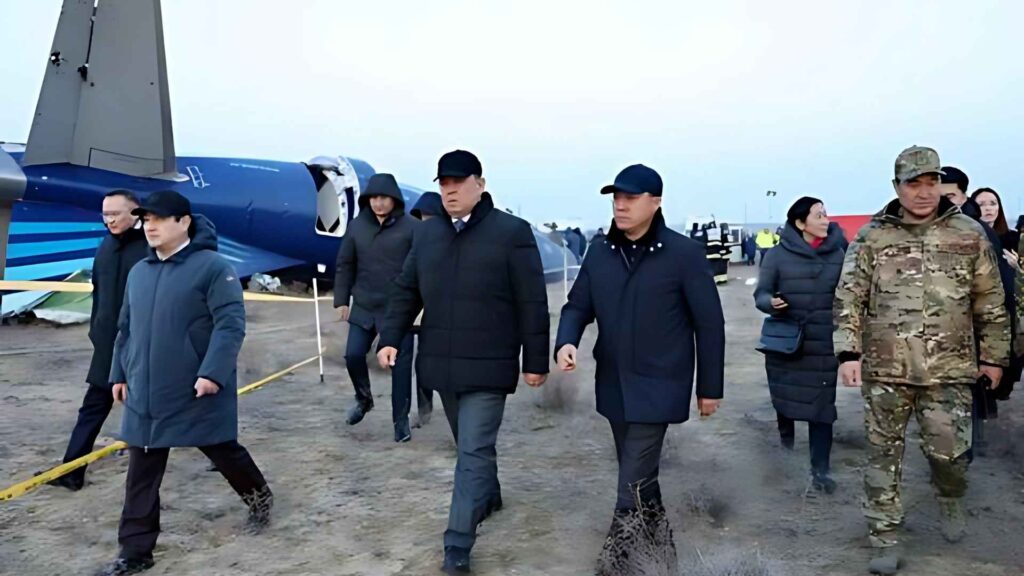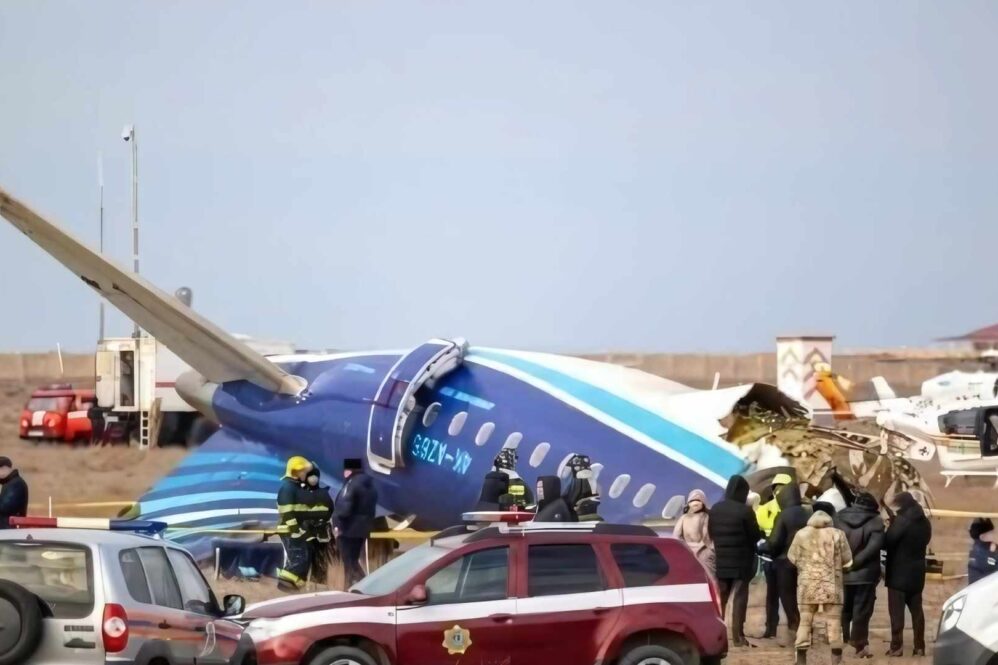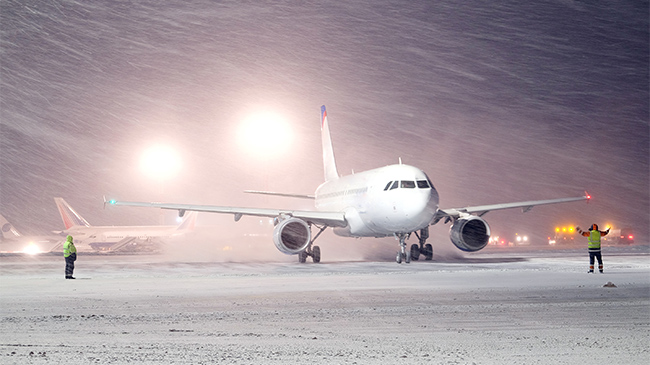A Tragic Incident Sparks International Concern
On December 25, 2024, Azerbaijan Airlines Flight 8243 crashed near Aktau International Airport in Kazakhstan, resulting in 38 fatalities and 29 injuries. The incident has sparked widespread concern and condemnation from the international community. As investigators work to determine the cause of the crash, Russia has warned against speculation and hypotheses.
The Crash Site and Initial Response
Meanwhile, the crash site, located near Aktau International Airport, has been secured by Kazakh authorities. Rescue teams were quickly deployed to the scene, and survivors were rushed to nearby hospitals for treatment. Furthermore, the Kazakh government has launched an investigation into the crash, with assistance from Azerbaijani and Russian experts.

Theories and Speculation
In the aftermath of the crash, various theories have emerged regarding the possible cause. Some have suggested that Russian air defenses might have been responsible for the disaster. However, Russian authorities have warned against speculation and hypotheses, emphasizing the need for a thorough and impartial investigation. Additionally, experts have pointed out that the investigation is complex and will require careful analysis of evidence.
International Cooperation and Aviation Safety
The investigation into the crash highlights the importance of international cooperation in aviation safety. The crash involves multiple countries, including Azerbaijan, Kazakhstan, and Russia. As such, it is essential that investigators work together to determine the cause of the crash and identify measures to prevent similar incidents in the future. Moreover, international cooperation is crucial in establishing and enforcing strict safety standards.
The Role of Government Policies and Regulations
Government policies and regulations play a critical role in promoting aviation safety. In the wake of the crash, there will likely be increased scrutiny of safety protocols and regulations in the region. Governments must work together to establish and enforce strict safety standards, ensuring that airlines and airports operate safely and responsibly. Furthermore, governments can provide resources and support for safety initiatives.
Case Studies in Aviation Safety
There are several examples of airlines and airports that have successfully implemented safety initiatives. For instance, Singapore Airlines has implemented a comprehensive safety management system, which includes regular audits and risk assessments. Similarly, Dubai International Airport has invested heavily in safety infrastructure, including advanced air traffic control systems. Additionally, these case studies demonstrate the importance of continuous improvement and innovation in aviation safety.
Emerging Technologies and Innovations
The aviation industry is on the cusp of significant technological advancements. Emerging technologies, such as electric and hybrid-electric propulsion, offer promising solutions for reducing emissions and improving safety. Additionally, innovations in materials science and engineering are leading to the development of lighter, stronger aircraft materials. Moreover, these technologies have the potential to transform the aviation industry.

The Future of Sustainable Aviation
The crash of Azerbaijan Airlines Flight 8243 serves as a poignant reminder of the importance of safety in aviation. As the industry continues to evolve, it is essential that safety remains a top priority. By investing in emerging technologies and innovations, promoting international cooperation, and enforcing strict safety standards, we can work towards a safer, more sustainable future for aviation. Furthermore, sustainable aviation is crucial for reducing emissions and mitigating climate change.
Conclusion
The crash of Azerbaijan Airlines Flight 8243 is a tragic reminder of the risks and uncertainties of air travel. As investigators work to determine the cause of the crash, it is essential that we avoid speculation and hypotheses. Instead, we must focus on promoting international cooperation, enforcing strict safety standards, and investing in emerging technologies and innovations. By working together, we can create a safer, more sustainable future for aviation.

















